Juan Mata was never the Jose Mourinho kind of playerThe relationship between a manager and a player can be a beautiful thing. It’s a fast life at the top – media, money and massive games. It is in this haze of noise and fury that young men, some of barely college going age, are thrust all too suddenly – regardless of whether they want it or not, whether they are ready for it or not.In such cases, a manager often becomes a father figure. They have the experience, the poise and the know-how – all extremely valuable for players looking for some helpful advice.All an underperformer often needs is the right manager to bring the best out of him. Fans everywhere can produce several recollections of how a career in jeopardy was rescued by a wise head, or how a youngster fulfilled his huge potential thanks to some guiding words.Alas, it is always not so hunky dory. Some players take an instant dislike to the new man in charge. From being the first name on the team sheet, they are deemed surplus to requirements – whether due to a tactical misfit or a clash of egos. Here are ten such players.Updated to reflect the current scenario in March 2017
#1 Jamie Carragher (Rafa Benitez)
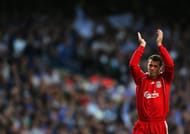
By the time Gerard Houllier left the club in 2004, Jamie Carragher was treading water. He was the kind of player who you never quite know what to do with. If necessary, you could sell him and bring in a specialist. On the other hand, you might need someone reliable to plug a gap. Carragher’s versatility proved to be his undoing, really.
Despite making the Champions League places in 2004, Liverpool were out of sorts and low on morale. Houllier went and Rafael Benitez came. The latter was able to boost the general quality of the squad somewhat. One of the ways he did that was to shift Carragher to centre-back.
Stéphane Henchoz’s struggle with injury and Igor Bišcan’s at times very worrying form opened the door for a new centre-half in the summer of 2004, but Benitez put his faith in Carragher – and put him in the centre of defence.
It was a brilliantly perceptive gambit. Carragher’s limited pace and heavy-handedness (footedness?) with the ball was rarely exposed in the centre of defence. Instead, his booming voice and leadership qualities tied together a no-frills defensive sensibility with simple passing to make him a permanent fixture in the side.
The Scouse defender crossed more than 50 appearances for every season Rafa Benitez was at the club. and eventually, he reached second on Liverpool’s all-time appearance chart and first in terms of European games.
Along with earning the respect of his teammates, he also became the terrace favourite. Indeed, the fans dreamed of a team of Carraghers, but one wonders if he would have become one of the club’s greatest ever defenders had Benitez not intervened at just the right time.
#2 Juan Mata (Jose Mourinho)
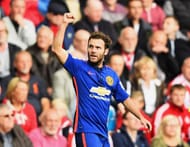
The 2008 financial crisis hit Valencia Club de Futbol hard – presidents were coming and going with alarming regularity and it seemed they would face a fight to stay afloat.
Fortunately, they managed to qualify for the Champions League in 2010, and again in 2011. Unfortunately, even their talented manager Unai Emery could do nothing about the financial might of Chelsea, who tempted midfielder Juan Mata to London in the summer of 2011.
Billed as a number 10 of supreme finesse and capable of enormous productivity, Mata quickly became the solution to Chelsea’s at times fruitless labour. Over two seasons, he was the darling of Stamford Bridge, being voted Chelsea’s Player of the Year in 2012 and 2013.
But then, in the summer of 2013, was the Second Coming of Jose Mourinho.
Mata, you see, was sublime when the ball was placed at his feet and he was asked to cause havoc in the opposition half. However, in tough away games or in Europe, where every player was expected adjust to demands and pull their weight defensively, he was often found wanting. And for a manager like Mourinho, who was all about control, it was widely predicted Mata would struggle to win the favour of his new boss.
Those fears proved to be true. From being the centrepiece of the team, Mata went to being someone whose style was all wrong. The same style, mind you, which had got him that far in the first place.
The Brazilian Oscar took his place in the side, and Mata became an afterthought. There were only 17 appearances under the new boss and no goals. Eventually, he left for Manchester United after just half a season under Mourinho (who would also move to Old Trafford in 2016).
#3 Emilio Butragueno (Javier Clemente)
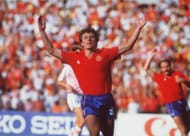
One of the most interesting figures of Spanish football in the past half century, Javier Clemente had an early start to his career in management, which had two distinct periods of particular interest – two periods that reinforced his brash, outspoken personality and made no attempt to disguise his intentions.
As manager of Athletic Bilbao in the 1980s, Clemente’s bloody-minded defensive approach was far from attractive, but it delivered the league title in 1983 (Athletic’s first since 1956) and 1984. His rabid allegiance to his Basque brothers was no secret, and it was manifested most starkly when he was appointed the manager of Spain in 1992.
When Clemente took up the job, the Quinta del Buitre were the wielders of influence in the dressing room. They were a group of five players (Míchel, Butragueño, Pardeza, Sanchís and Vázquez) who occupied a similar position at Real Madrid as well, given that all five had come through the capital club’s youth system.
Emilio Butragueño was the unofficial ‘leader’ of the group, an elegant, stylish forward of prodigious goal-scoring talent who was precisely the kind Clemente would not fancy rubbing shoulders with.
It must be understood that Clemente jettisoned the entire Quinta not because of sporting reasons, but more to dissipate their influence and stamp his authority on the national team. Butragueño’s consignment to the scrap heap (at 29) had little to do with his ability.
None of the Quinta played for Spain after 1992. Butragueño had collected 26 goals in national colours by that point, Spain’s all-time top scorer in the day, and the sixth highest of all time (as of 2015). Clemente’s obsessive policy meant he couldn’t add to that tally.
#4 Gary Lineker (Johan Cruyff)
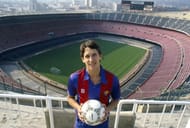
The ban on English clubs from European competition in the 1980s encouraged Gary Lineker, then of Everton, to try his luck abroad. Along with Welshman Mark Hughes, Lineker found himself in Catalonia on the payroll of Barcelona at the behest of Terry Venables. Their experiences make for interesting reading.
Hughes lasted just one unhappy season, and was loaned out to Bayern Munich. Lineker, on the other hand, became a smash hit.
The first season brought with it 20 goals, behind only the superlative Hugo Sanchez. These included a hat-trick in a thrilling 3-2 win over Real Madrid in the Camp Nou and another at the Bernabeu to secure a 1-1 draw.
And then he contracted hepatitis in early 1988. No worries – Barcelona won the King’s Cup, and Lineker eventually recovered.
However, in the meantime, Luis Aragones (who had himself replaced Venables), under whom Lineker had a similarly productive season, was sacked and replaced by Barcelona icon Johan Cruyff.
That proved to be his undoing at Barcelona. Cruyff did not fancy Lineker at all, giving him the cold and unfriendly treatment. Lineker was often forced out onto the wing when he played, while Julio Salinas, a striker of more modest talents, was given the central role. Relations with Cruyff permanently soured, Lineker left Barcelona in 1989, fewer appearances and goals to his credit in 1988/89 than his first two seasons.
Lineker could have become one of the few British players to genuinely thrive outside his homeland for an extended period. The disfavour of Johan Cruyff means we, for better or for worse, will never know.
#5 Kevin Keegan (Branko Zebec)
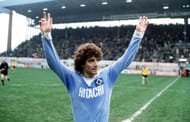
Kevin Keegan left Liverpool in 1977 – at his peak, having completed a league and European Cup double – for Hamburg. The German side represented a significantly more favourable climate for Keegan’s financial interests.
It did not begin smoothly. The European Super Cup was lost 1-7 on aggregate to Liverpool, a convenient confluence of circumstances generously seasoned with irony and amusement, made worse by ‘the replacement’ Kenny Dalglish grabbing one of the six scored at Anfield, and the Liverpool fans chanting ‘You should have stayed at Anfield’.
It got worse. Keegan did not initially speak German, which exacerbated the silent hostility he faced from his new teammates, born partly of his enormous and well-publicised salary (the most of any footballer in Germany at the time) and his replacement of the popular Dutchman Horst Blankenberg in an era where clubs were only permitted a limited number of foreigners.
Despite being named European Footballer of the Year, Hamburg’s disappointing season was a low for Keegan, but a move that looked to have gone wrong was turned around with the appointment of Yugoslav coach Branko Zebec in 1978.
Keegan recalls how Zebec’s brutal, almost inhuman, fitness regime took its toll on the squad initially but paid handsome dividends when Hamburg won the Bundesliga in 1979 and reached the European Cup final in 1980.
Training was one thing, the approach was another. Zebec also loosened up Hamburg’s formation slightly, and the newly obtained fluidity allowed the dangerous crossing of Manfred Kaltz, the impressive size of Horst Hrubesch and, of course, the 17 goals of Kevin Keegan to thrive.
Keegan was one of the first ‘superstars’ of English football but a poor spell in Germany could easily have destroyed his reputation. Branko Zebec ensured that it was not so.
#6 Lucas Radebe (George Graham)
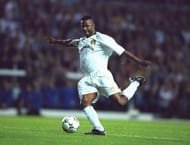
He had never even heard of Leeds until he signed for them in 1994. David O’ Leary’s new age soldiers are argued to have really taken shape around 2000, but the foundation stone was really laid by Howard Wilkinson at a time when Wet Wet Wet’s cover of “Love is All Around” was at #1 in the charts.
It was a rocky start. Lucas Radebe only managed 25 appearances in his first two seasons combined, despite feeling he was doing all he could to win his place in the side. Leeds’ poor performances also meant Wilkinson was sacked in 1996.
By this point, Radebe was looking for an exit. He thought of going back home, but new boss George Graham, formerly of Arsenal and always one to appreciate the worth of a good defender, decided to keep him on.
He had got his chance and he took it with both hands; besides becoming a regular in the side, Radebe was also named its captain by 1998/99. The crowning moment came a little short of three years later.
Leeds’ 3-0 dispatch of a superbly talented Deportivo La Coruña side on 4 April 2001 represented the zenith of Radebe’s time at Leeds. That result (despite defeat in the second leg) was enough to take them through to the semi-finals of the Champions League.
They then fell to Valencia, and Radebe fell as well. Injuries took their toll after the millennium was crossed, and Radebe’s time at Leeds wound down gradually, eventually coming to a stop with the Yorkshire side in the Championship.
The ending was quite sad, but Radebe’s legendary status at Elland Road would have been nonexistent had George Graham decided not to trust this skilful defender.
#7 Marouane Fellaini (Louis van Gaal)
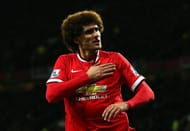
The summer of 2013 was a simultaneously exciting and terrifying time for Manchester United fans. The reaction to the appointment of David Moyes was mixed; with “Fergie will sort it out” no longer a relevant fallback to the club’s issues, could Moyes carry on the legacy?
In that he failed, his catastrophic capture of Marouane Fellaini on the final day of the window almost a symbol of his disastrous time in the hot seat.
United failed to make the Champions League and Moyes was dismissed, not even completing the season. There were many names thrown around as a possible replacement, but the decision was finally made in favour of Louis van Gaal.
Bolstered by the arrivals of Radamel Falcao and Angel Di Maria, Manchester United were expected to make it back into the Champions League in some style. So far, so good.
The trouble began after that. The side’s failure to gel led to them taking just 13 points from 10 games and Van Gaal was forced to change tactics. Results were what the club needed, not showmanship, and he installed a more direct style of play to that end. Fellaini was envisioned as a key part of that strategy.
Fellaini’s aerial prowess and uncompromising style was a constant irritation, and his perseverance often forced mistakes. From being an unwanted liability before he even made his first appearance, he became an important component of the club’s style, whatever complaints can be made of it.
Fellaini scored six goals in the first season under van Gaal: not a huge amount, but very much in tune with his Everton average – exactly five goals.
While Fellaini is no Zidane, Manchester United have found utility in his contribution, and Van Gaal should be awarded some credit for that.
#8 Luka Modric (Carlo Ancelotti)
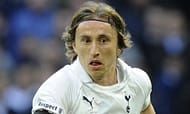
The early travails of Luka Modric in the Spanish capital are well known. Arriving in 2012 from Tottenham, Modric was expected to add an extra helping of savvy to a midfield bursting with talent.
It all went badly wrong. Modric stumbled and staggered initially, unable to force himself into the starting lineup under Jose Mourinho. Despite a brief glimmer of hope towards the end, Modric’s first season in Spain was largely disappointing. He was bottom of the popularity polls – quite literally – as readers of Marca voted him one of the worst signings of 2012.
Carlo Ancelotti then took Mourinho’s place in the hot seat in 2013 and harnessed the Croatian’s talent to much greater effect. The Italian favoured a more attacking style that brought goals in greater frequency. For Modric personally, it was heaven.
An economy in possession was matched subtle ball work as Modric made his way into the Champions League Team of the Season for 2014 (a successful campaign for Real Madrid) and was named La Liga’s best midfielder, besides winning the King’s Cup.
Finally, fittingly, as Sergio Ramos thundered a very late header in the Champions League final to save the game for Real Madrid, it was from Modric’s corner. One wonders if he would have been around to take it had Carlo Ancelotti not taken control of the ship.
#9 Gareth Bale (Harry Redknapp)
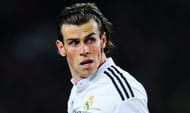
Gareth Bale’s story almost ended before it began. Arriving at Tottenham as a left back from Southampton, Bale was considered one for the future.
A bad injury in the latter half of 2007 derailed his progression somewhat, and it appeared to have lasting effects as Bale struggled through 2008/09 and was eventually dropped. Juande Ramos was sacked in 2008, and in came Harry Redknapp, the man who revived Bale’s fortunes, although it took a while for the show to get back on the road.
2009/10 saw Redknapp oversee Bale’s return to the side as the Welshman gradually got to grips with the top flight. At the end of the season, Tottenham qualified for the Champions League for the first time.
The following two seasons saw Bale dial it up even further. Redknapp, crucially, decided to move Bale up to the wing, while persisting with Benoit Assou-Ekotto at left back. It proved to be a smart move.
Memorable performances against Young Boys and Inter Milan in Europe signalled Bale’s rise to the top of the English game. Even after Redknapp’s departure, he carried on unflinchingly, culminating in a sensational transfer to Real Madrid in 2013.
For a player who, it was rumoured, could have been sold for as little as £3 million, a world record fee represented a strangely fitting turnaround. Redknapp was certainly a key part of it.
#10 Lionel Messi (Pep Guardiola)
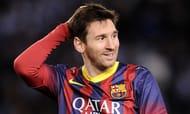
A surprising choice? Lionel Messi’s staggering haul makes it seems impossible that he was, at any point in time, less than utterly immense.
Yet, it is true that he was not always so. Messi was a supremely talented young forward in the summer of 2008, already a hit with Barcelona supporters and acknowledged as one of the best players in the world.
But Frank Rijkaard, for all his virtues, eventually lost control of the situation at Barcelona and was replaced by former midfielder Pep Guardiola. It was he who helped Messi make that ever so decisive step from very good to great.
Although he had the world at his feet, Messi could have crashed and burned very quickly, especially given his worrying propensity for collecting numerous injuries.
Guardiola changed all that by imposing a much firmer regimen on the Argentine, key to them an improvement of his diet and general fitness. Free from the constant injury interruptions, Messi made good on his promise, wowing fans across the globe and breaking record after record while at it.
After Rafael Benitez’s deployment of the right footed Alvaro Arbeloa at left back to shackle Messi during Liverpool’s victory at the Nou Camp on 21 February 2007, the possible limitations of Messi on the wing were laid bare. On the pitch, credit must be awarded to Guardiola, and indeed, the late Tito Vilanova, for gradually shifting Messi to the centre from his previous position on the right.
Also read: How Pep Guardiola transformed Lionel Messi into a destroyer overnight
